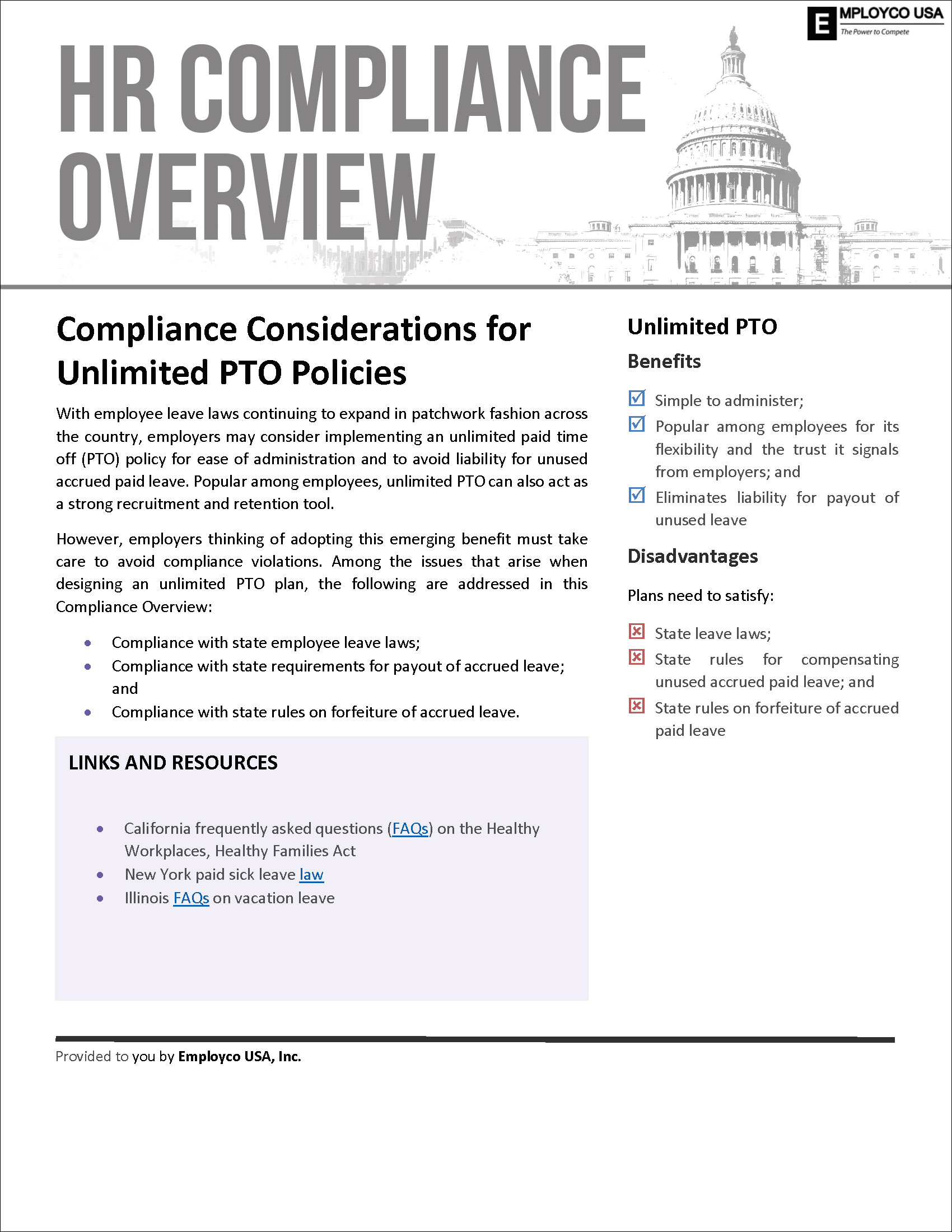
Numerous studies have revealed the importance of employees taking time off work for vacation. Leaving the office for a week or having an occasional day off gives employees a chance to not only take a well-deserved break to relax, but to come back to work with renewed energy and improved productivity.
Traditionally, time off is separated into paid vacation, sick, and personal days. Some companies have transitioned into simply offering paid time off (PTO), which essentially serves as a single “bucket” of time off, which can be used at the employee’s discretion. A less-common option that is slowly gaining more attention, spurred on by popularity among tech company startups, is the unlimited PTO policy.
According to recent research from retirement plan provider Empower, nearly 1 in 5 Americans say they would turn down a job offer that doesn’t include unlimited PTO. Despite some employers’ concerns that such policies might lead to excessive time away from work, the data tells a different story. In reality, employees with unlimited PTO take only slightly more time off—averaging 16 days per year—compared to 14 days for those with traditional, set PTO policies.
While employees are drawn to unlimited and open leave policies, these benefits remain relatively uncommon in the workplace. According to the 2024 SHRM Employee Benefits Survey, most employers continue to offer traditional leave structures, with 98% providing separate vacation time and 96% offering distinct sick leave. Only 7% of organizations currently offer an unlimited leave policy.
Employers thinking of adopting this emerging benefit must take care to avoid compliance violations. The following are among the issues that arise when designing an unlimited PTO plan:
- Compliance with state employee leave laws
- Compliance with state requirements for payout of accrued leave
- Compliance with state rules on forfeiture of accrued leave
The following link provides more detailed guidance: Compliance Considerations for Unlimited PTO Policies.
